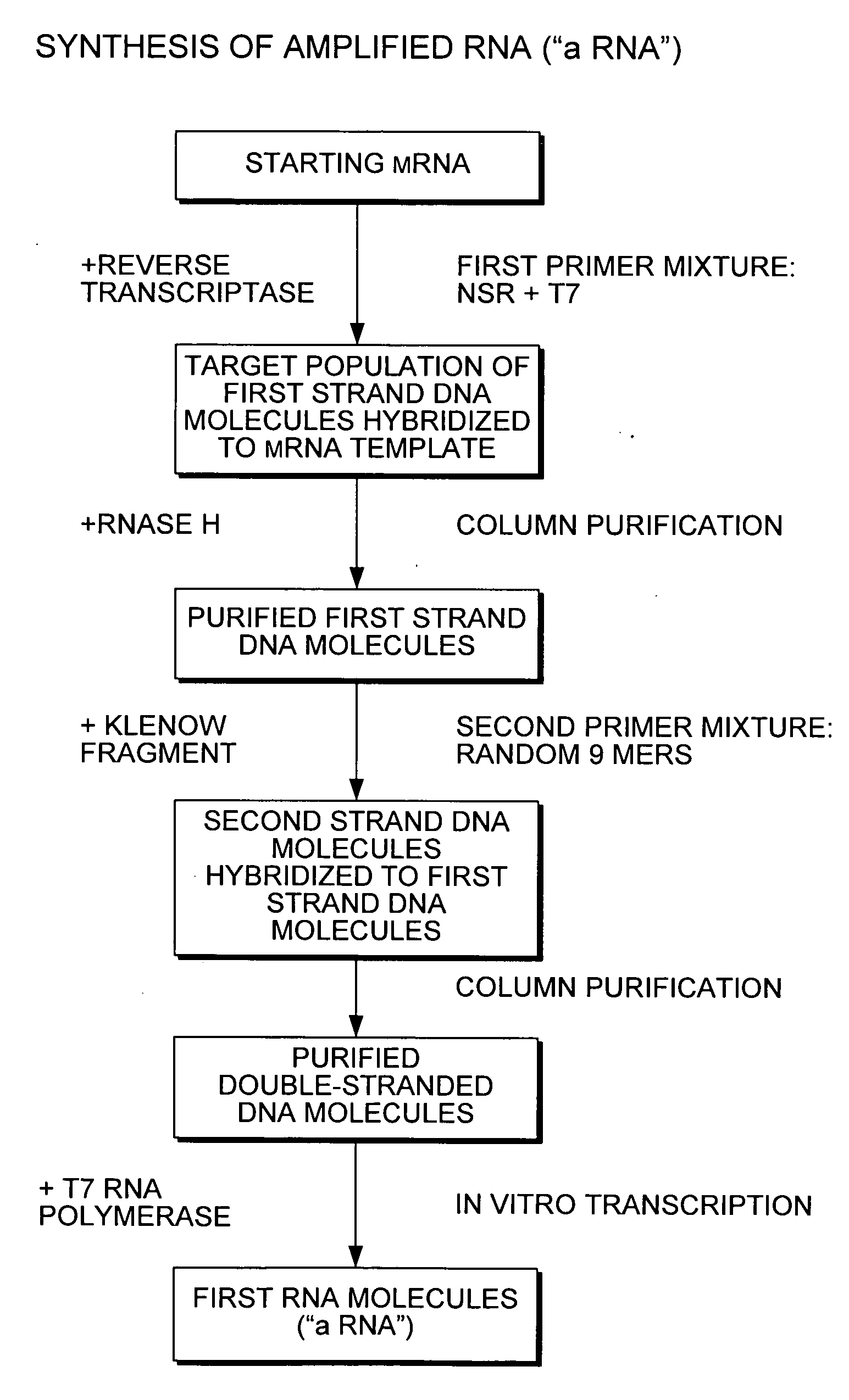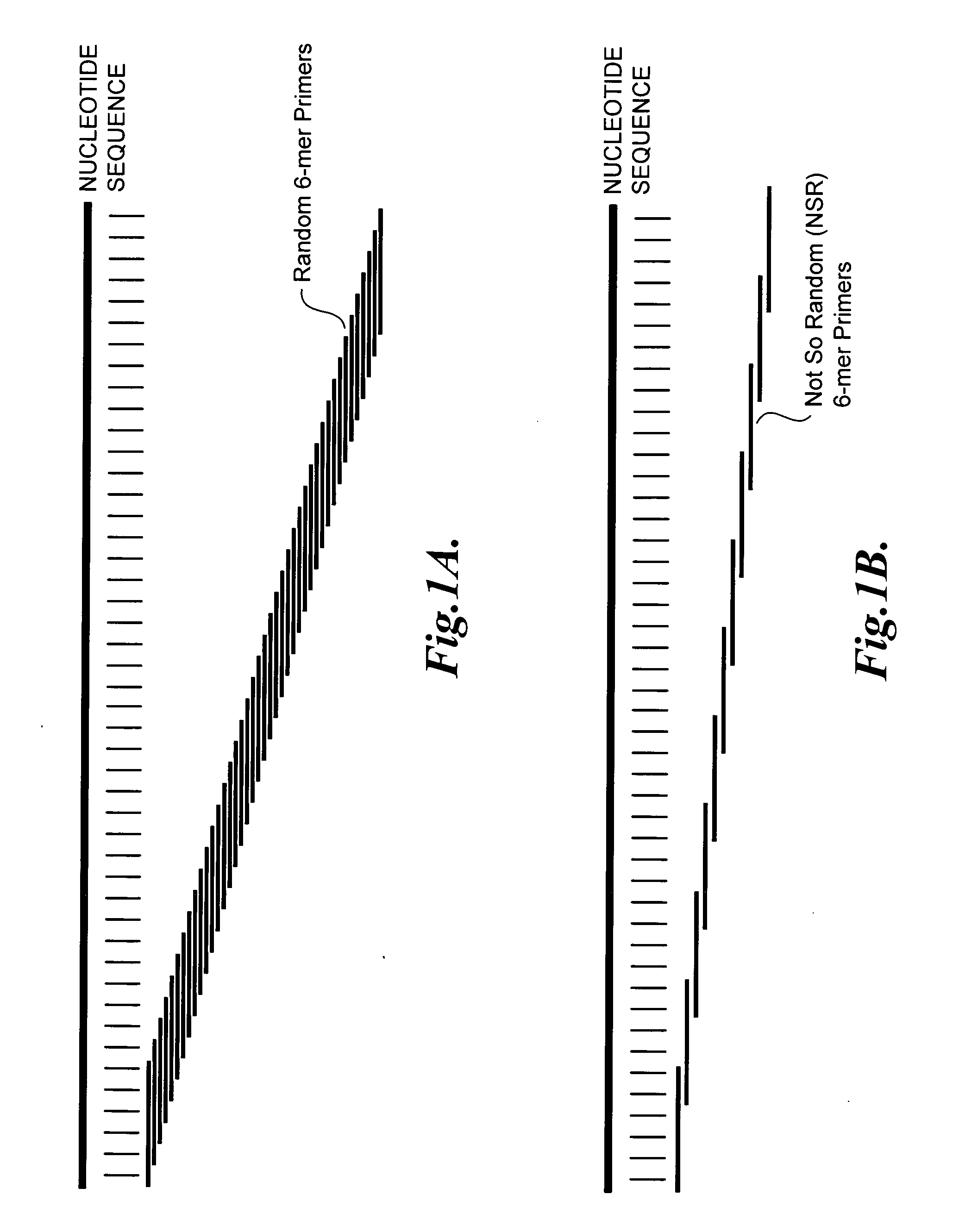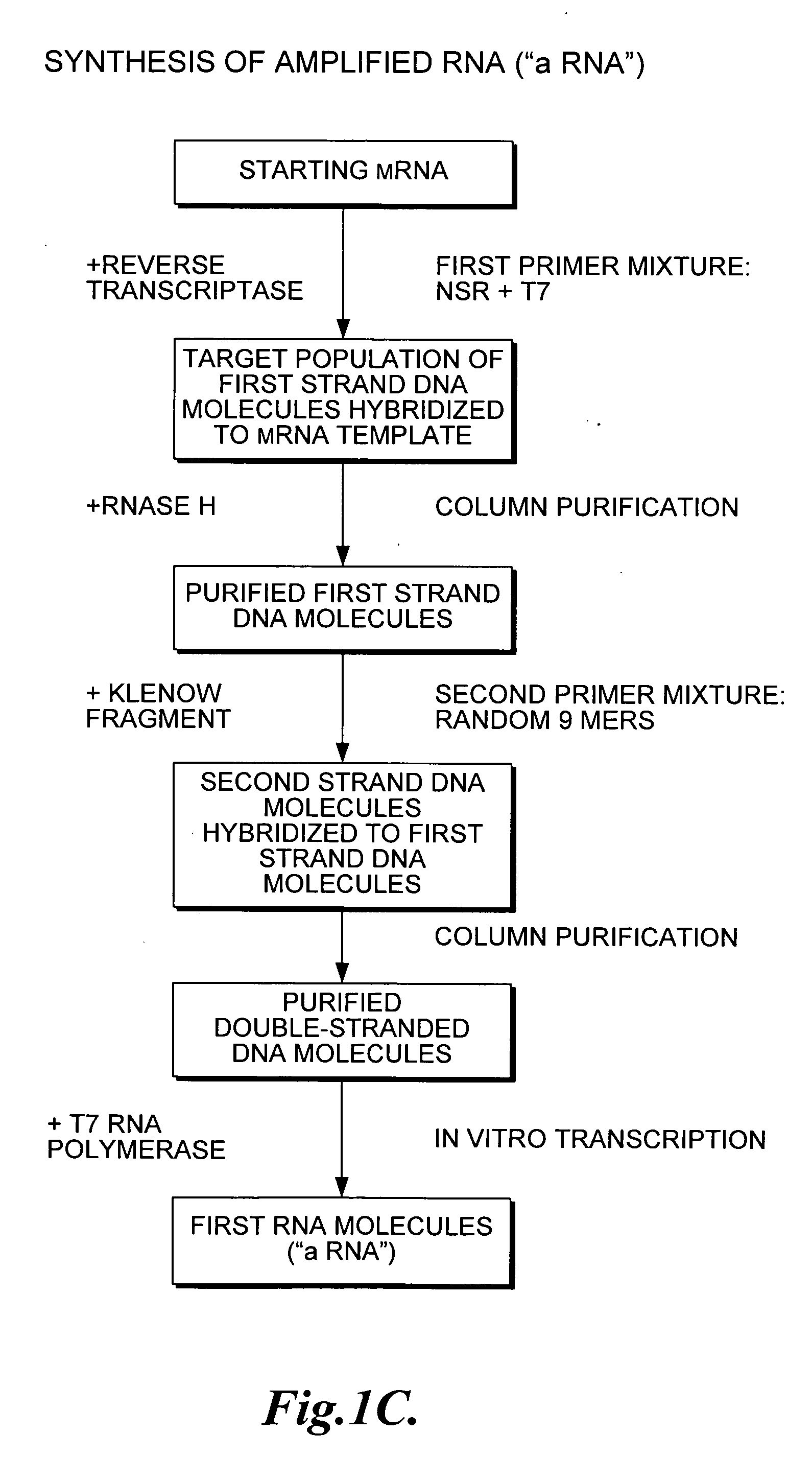Nucleic acid amplification using non-random primers
a technology of nucleic acid and primer, which is applied in the field of oligonucleotides, can solve the problems of inability to amplify highly expressed rnas, increase the cost of oligonucleotides with the length of oligonucleotides,
- Summary
- Abstract
- Description
- Claims
- Application Information
AI Technical Summary
Benefits of technology
Problems solved by technology
Method used
Image
Examples
example 1
[0089]This Example describes the selection of a population of 933 6-mer oligonucleotides (SEQ ID NOS:1-933) that hybridizes to all, or substantially all, mRNA molecules expressed in blood cells, but that does not hybridize to globin mRNA or to ribosomal RNA.
[0090]All 4096 possible 6-mer oligonucleotides were computed, wherein each nucleotide was A, T (or U), C, or G. The reverse complement of each 6-mer oligonucleotide was compared to the nucleotide sequences of 18S and 28S rRNAs, and to the nucleotide sequences of the following six hemoglobin genes, selected based on their high level of expression in blood samples:
TABLE 1NCBI Reference SequenceGene SymbolTranscript IdentifierHBA1NM_000558.3HBA2NM_000517.3HBBNM_000518.4HBDNM_000519.2HBG1NM_000559.2HBG2NM_000184.2
[0091]Reverse-complement 6-mer oligonucleotides having perfect matches to any of the eight transcript sequences were eliminated. The reverse complements of 933 6-mers (SEQ ID NOS:1-933) did not perfectly match any portion of...
example 2
[0092]This Example shows that the population of oligonucleotides having the nucleic acid sequences set forth in SEQ ID NOS:1-933 hybridize to every 4 to 5 nucleotides on a nucleic acid sequence within the RefSeq database accessible at the website of the National Center for Biotechnology Information (NCBI), U.S. National Library of Medicine, 8600 Rockville Pike, Bethesda, Md. 20894, U.S.A. NCBI's reference sequence transcript database (RefSeq) contains what is considered a gold-standard of human protein coding transcripts.
[0093]Random 6-mers (N6) can anneal at every nucleotide position on a transcript sequence from the RefSeq database (represented as “nucleotide sequence”), as shown in FIG. 1A. After subtracting out the 6-mers whose reverse complements are a perfect match to ribosomal RNAs and globin mRNAs, the remaining NSR oligonucleotides (SEQ ID NOS:1-933) show a perfect match to every 4 to 5 nucleotides on nucleic acid sequences within the RefSeq database (represented as “nucleo...
example 3
[0095]This Example shows that PCR amplification of an actin reporter mRNA using the 933 6-mers (SEQ ID NOS:1-933) (that each have the T7 promoter (SEQ ID NO:934) covalently attached at the 5′ end) selectively reduces priming of globin mRNA and rRNA.
[0096]Total RNA was extracted from individual donors of human whole blood using the PAXgene Blood RNA Kit (Qiagen, Inc., Valencia, Calif.) according to the manufacturer's instructions. MMLV (Moloney Murine Leukemia Virus) reverse transcriptase (Epicentre Biotechnologies, Madison, Wis.) was used to synthesize cDNA from 100 ng of template RNA with 5 μM 6-mers (SEQ ID NOS:1-933) (T7-NSR6) or random 9-mers with the T7 promoter covalently attached at the 5′ end (T7-N9). Prior to reverse transcription, 5 μL of water containing primers and template were denatured at 65° C. for 5 min, snap cooled at 4° C. and equilibrated to 23° C. For reverse transcription, 5 μL of RT master mix containing 1 μl of water, 2 μl of 5× First Strand Buffer (250 mM Tr...
PUM
| Property | Measurement | Unit |
|---|---|---|
| temperature | aaaaa | aaaaa |
| Tm | aaaaa | aaaaa |
| elongation temperature | aaaaa | aaaaa |
Abstract
Description
Claims
Application Information
 Login to View More
Login to View More - R&D
- Intellectual Property
- Life Sciences
- Materials
- Tech Scout
- Unparalleled Data Quality
- Higher Quality Content
- 60% Fewer Hallucinations
Browse by: Latest US Patents, China's latest patents, Technical Efficacy Thesaurus, Application Domain, Technology Topic, Popular Technical Reports.
© 2025 PatSnap. All rights reserved.Legal|Privacy policy|Modern Slavery Act Transparency Statement|Sitemap|About US| Contact US: help@patsnap.com



